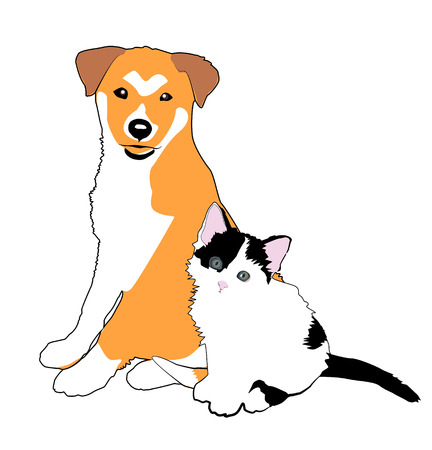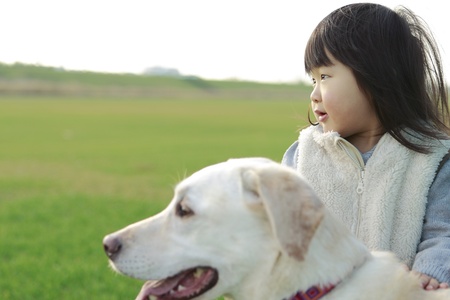Introduction: Family Dynamics and Pet Adoption in India
In recent years, the landscape of pet adoption among families with children has been evolving rapidly across India. Whether in the bustling metros like Mumbai, Delhi, or Bengaluru, or in the heartlands of rural Maharashtra, Punjab, and Tamil Nadu, more families are opening their homes to furry companions. This shift reflects not just a growing love for animals but also changing attitudes towards pets as integral family members. Traditionally, Indian families have had a close connection with animals—often dogs for security in villages or cows and goats as part of agrarian life. However, urbanisation and social media influence have sparked a new trend: adopting pets primarily for companionship and emotional well-being, especially for children. The narrative is different in cities versus villages, influenced by space, lifestyle, and cultural beliefs. While urban Indian parents see pets as playmates who teach kids responsibility and empathy, rural households often view animals through the lens of utility or tradition. With animal welfare NGOs and adoption drives gaining traction in both settings, the popularity of adopting (rather than buying) pets is steadily rising. The cultural attitude toward pet parenting is shifting from duty-bound caretaking to a more affectionate bond—something that’s particularly visible among younger generations raising kids alongside adopted cats and dogs.
Urban India: Pet Adoption as a Lifestyle Choice
In cities like Mumbai, Bengaluru, and Delhi, pet adoption among families with children is often seen as a modern lifestyle choice. The growing influence of global pet culture, exposure to social media trends, and the desire for companionship in nuclear families drive urban Indians toward bringing pets into their homes. Unlike rural areas, urban dwellings—mostly apartments—significantly shape the type of pets city families choose. For instance, small dog breeds such as Shih Tzus and Pugs, or even cats like Persians and Indian domestics, are popular because they adapt well to limited spaces.
Key Influences on Urban Pet Adoption
| Factor | Impact on Pet Choice |
|---|---|
| Apartment Living | Preference for small-sized pets; restricted space limits options for larger animals. |
| Nuclear Family Structure | Pets chosen for companionship, emotional support, and as siblings for kids. |
| Global Exposure | Awareness of international breeds and pet care standards through social media and expat communities. |
Cultural Nuances in Urban Pet Parenting
The concept of pets as family members is increasingly accepted among urban Indians. Birthday celebrations for pets, pet-friendly cafes in localities like Bandra (Mumbai) or Indiranagar (Bengaluru), and Instagram accounts dedicated to furry friends are now common. Parents often involve children in the decision-making process, teaching them responsibility while making sure the chosen pet fits the familys lifestyle.
Challenges Faced by Urban Families
Despite the enthusiasm, urban families face unique hurdles such as housing society restrictions, lack of open spaces for exercise, and high maintenance costs. Some societies in Delhi NCR enforce strict rules regarding pets, which influences both the breed and number of pets a family can have. As a result, many parents opt for adopted indie dogs or rescued cats that are better suited to Indian climates and apartment life.

Rural India: Pets as Companions and Helpers
In rural India, the concept of pets is deeply intertwined with daily life and the agricultural economy. Here, animals are not just companions but also play a functional role in supporting families. Children growing up in villages often form strong bonds with animals such as desi dogs, goats, and cows, who are integral to the household’s routine. Unlike in urban environments where pets might be seen primarily for companionship or status, rural children learn early on that animals can be both friends and helpers.
Desi dogs, for instance, are common in many villages across states like Uttar Pradesh, Bihar, and Maharashtra. These local breeds act as guardians of homes and fields, alerting families to any intruders or wildlife. It is not unusual to see children running around with these dogs, feeding them leftovers from their own plates and developing a sense of responsibility towards their well-being.
Similarly, goats and cows are more than just livestock; they are almost family members. Cows provide milk that is used for tea, sweets, and even religious rituals. Goats contribute to the household income through milk or by being sold during festival seasons like Bakrid. Kids in rural households often help with chores such as feeding the animals or taking them out to graze. This hands-on involvement teaches them empathy, patience, and respect for all living beings from an early age.
The rural perspective on adopting pets thus goes beyond affection; it is about coexistence and mutual dependence. Animals are included in festivals, family events, and even given names reflecting local culture or mythology—like Gauri for cows or Sheru for dogs. The connection between kids and their animal companions becomes a vital part of their upbringing, creating memories that last a lifetime.
4. Children and Pet Bonding: Unique Experiences in Each Setting
When it comes to pet adoption with children, the bonding experience between kids and pets in urban and rural India is shaped by unique social, cultural, and environmental influences. Let’s explore how these differences play out in daily life and family dynamics.
Bonding Patterns: Urban vs Rural
| Aspect | Urban India | Rural India |
|---|---|---|
| Interaction Time | Limited due to busy schedules; mostly evenings or weekends | More regular throughout the day; children often involved in pet care as part of chores |
| Types of Pets | Mainly dogs, cats, sometimes exotic pets like rabbits or hamsters | Dogs, cows, goats, chickens; focus on utility animals as well as companionship |
| Parental Involvement | Supervised interaction; safety concerns are high priority | More independence for kids; trust built through responsibility from an early age |
| Learning Responsibility | Guided by parents, often includes structured tasks (feeding, cleaning) | Integrated into daily routine; children help with animal care naturally |
| Role of Pets in Family System | Pets are companions, stress-relievers, sometimes status symbols in modern nuclear families | Pets play roles in livelihood (e.g., guarding, milk production), seen as part of joint family structure and traditions |
Cultural Values and Modern Influences
In cities like Mumbai or Bengaluru, exposure to global trends means pets are increasingly viewed as family members. Parents encourage children to treat pets kindly, teaching empathy and responsibility—sometimes even celebrating birthdays for their dogs or cats. The nuclear family setup also means that pets are a way for children to learn about caring for another living being within a smaller household.
In contrast, rural areas retain traditional values where animals have a respected place in the household but serve practical functions too. Children grow up understanding the cycle of life through caring for cows, goats, or hens—learning not just compassion but also skills vital for rural living. Grandparents and extended family often pass down stories or folk wisdom about animals, weaving pets into local customs and religious practices.
Community Support vs Individual Effort
Urban families may rely on pet trainers or dog walkers due to time constraints. Meanwhile, in villages, neighbours and relatives form a support system—if a child forgets to feed the dog, someone else steps in. This collective approach strengthens bonds not only between kids and pets but also within the community itself.
A Blend of Old and New Perspectives
The gap is narrowing as technology brings new ideas to rural India and city families rediscover the value of tradition. Whether it’s a child walking a Labrador in Hyderabad’s gated colony or helping herd goats on a Tamil Nadu farm, the shared experiences foster growth, joy, and lasting memories.
5. Challenges and Support: Veterinary Care, Infrastructure, and Social Acceptance
When it comes to adopting pets with kids in India, the challenges and support systems available can be very different depending on whether you live in a city or a rural area. For urban families, finding a good veterinary clinic is not too difficult—most metro cities like Bengaluru, Mumbai, or Delhi have modern pet hospitals, 24/7 emergency care, and even pet grooming salons. Pet supply stores are almost everywhere, and if you don’t want to go out, Swiggy or Amazon will deliver dog food or cat litter right to your doorstep. Urban parents often mention that their children’s schools sometimes organise animal welfare awareness days, making adoption feel like a socially accepted norm among kids and neighbours alike.
However, for families living in smaller towns or villages, things look quite different. Veterinary services may only be available at government-run centres that focus mainly on cattle and goats rather than cats or dogs. A mother from a village near Nashik shared that she needs to travel more than 15 km to get her adopted puppy vaccinated, and sometimes the medicine is out of stock. Pet food brands like Pedigree or Whiskas are rarely found in local kirana stores; most rural families still feed their pets homemade rotis and milk. Community attitudes can also be a mixed bag—while some villagers show warmth towards street dogs (“desi dogs”), others might question why anyone would keep an animal as a family member when it could be working on the farm instead.
Support from neighbours varies too. In urban societies, Resident Welfare Associations (RWAs) sometimes have strict rules about pet ownership—like leash laws and designated walking areas—but there are also active WhatsApp groups for lost-and-found pets and adoption drives. In contrast, rural communities rely heavily on word of mouth; if someone’s cow goes missing or a puppy needs a home, everyone hears about it by evening. But social acceptance still has its hurdles—one father from Punjab recounted how his relatives teased his children for treating their adopted dog “like a son.” It takes time for mindsets to shift.
Despite these challenges, both urban and rural Indian families find ways to provide love and care for their adopted pets. Many city dwellers opt for regular health check-ups and vaccination schedules, while rural families depend on traditional remedies passed down by elders. Both settings show resilience—children learn empathy regardless of whether they buy imported kibble online or share their chapati with their furry friend under the mango tree.
6. Tips for Families: Navigating Pet Adoption with Kids
Start Conversations Early
Discussing pet adoption as a family is essential, especially when children are involved. In Indian households, whether in a bustling city like Mumbai or a quiet village in Tamil Nadu, open discussions help everyone understand the responsibilities and joys of bringing a new animal member home. Encourage your kids to share their thoughts and ask questions—this builds empathy and prepares them for real-life care.
Understand Local Realities
City families may face space constraints in apartments, while rural families might have more outdoor area but less access to veterinary care. Choose pets that fit your living environment; for example, smaller breeds or indie dogs are better suited for urban flats, whereas larger breeds can thrive on farms. Always consider the local climate and traditional beliefs about certain animals before making a decision.
Balance Modern Advice with Traditional Wisdom
While it’s helpful to read online resources about pet care, don’t ignore dadi-nani’s (grandparents’) advice! Many Indian families have grown up with animals and have valuable tips on feeding, hygiene, and handling local challenges. For instance, neem leaves for natural pest control or using coconut oil for skin health are time-tested practices that work well alongside modern vet recommendations.
Visit Shelters and Meet Indie Pets
Instead of focusing only on pedigrees, take your kids to visit local shelters or connect with NGOs like People For Animals. Meeting desi (local) pets helps children appreciate the uniqueness of India’s animal companions and teaches compassion towards strays—a value cherished in both urban and rural communities.
Prepare for Adjustments
Pet adoption means shifting routines: walks before school, setting aside time for play after homework, and being patient during initial adjustment periods. Assign age-appropriate tasks—like filling water bowls or brushing fur—to encourage responsibility in your child.
Invest in Education and Health
Find a trusted veterinarian nearby; many urban areas have pet clinics, while rural families might need to travel further. Teach your kids the importance of vaccinations, regular checkups, and clean living spaces for pets. Leverage community WhatsApp groups or Facebook pages to get local advice on best practices or emergency contacts.
Create Lasting Memories Together
From celebrating Raksha Bandhan with your pet siblings to including them in family poojas (prayers), blend your family’s traditions into the pet’s life. This not only strengthens the bond between children and their pets but also makes adoption a truly Indian experience—rich in love, learning, and togetherness.
7. Conclusion: Evolving Views and the Future of Pet Adoption in India
As India rapidly transforms, our attitudes towards pet adoption—especially with kids in the family—are also evolving. Urban families, exposed to global trends and social media, are increasingly seeing pets as part of the family rather than just animals. Meanwhile, rural communities are blending traditional approaches with new ideas, slowly opening up to the emotional bonds children form with their furry companions. Across both settings, today’s kids are at the heart of this shift. Their curiosity, compassion, and exposure to stories about animal welfare on TV and online are shaping how families view adoption. More parents now consider the positive impact pets can have on a child’s development: responsibility, empathy, and unconditional love.
This change is not just limited to metros like Mumbai or Delhi; even in smaller towns and villages, children are influencing their parents’ choices by asking for pets not just for protection or work, but as friends. As this young generation grows up with more awareness and access to resources such as vaccination drives and animal shelters, the future of pet adoption looks brighter across all corners of India. The hope is that, whether in a bustling city apartment or a peaceful village home, every child who dreams of a pet will be met with open arms—and wagging tails.

